Our Search for the Fossils That Came Out Of The Ooze Under LA
The La Brea Tar Pits is a great place to go to see science in action. It’s ooey and gooey, and full of Ice Age sciency goodness. Read on to find out more.
If you find yourself in Los Angeles, and you feel the need to see some fossils (or if you are looking for something really cool and interesting to see), there are several places you can go. But to see a massive, and still growing, collection of amazing Ice Age fossils, you simply have to go to the La Brea Tar Pits.
My family recently spent an afternoon exploring the world’s only active dig site for Ice Age fossils that is located in the middle of a city. I knew it would be a good day when I told the kids where we were going, and my older kids got excited, even though they’ve already been there several times over the years. We had a great time learning about Ice Age animals, the fossils they have found here, and what it was probably like in Ice Age Los Angeles.
Where in LA are the La Brea Tar Pits, Anyway?
The La Brea Tar Pits are located on Wilshire Blvd’s Museum Row in the Miracle Mile neighborhood of Los Angeles. It is on Wilshire Blvd, between Fairfax Ave and La Brea Ave, next to the Los Angeles County Museum of Art and near the Peterson Automotive Museum, the Craft Contemporary Museum, and the new Motion Picture Academy Museum, all of which are great places to visit as well. The Fairfax District, where you can find the LA Farmer’s Market, is nearby too.
How to Get To the La Brea Tar Pits
Driving to the La Brea Tar Pits
The La Brea Tar Pits are in the middle of LA. For the best route, use your GPS, especially during Rush Hour. The Tar Pits website doesn’t have driving directions, but LACMA, which is right next door, does. Here’s what they had to say:
From the Santa Monica Freeway (I-10): Take Fairfax Ave. north 2 miles to Wilshire Blvd.
From the Hollywood Freeway (US-101): Take Highland Avenue 3.5 miles south to Wilshire Blvd.; take a right on Wilshire and proceed 1 mile west.
Where to Park
The parking lot for the La Brea Tar Pits is on the north side of Hancock Park, at the corner of 6th St and Curson Ave. As of March 2022, it costs $15 to park for the entire day. There are also parking meters on Wilshire Blvd.
Be careful if you park on Wilshire Blvd. Only park there between 9:00 am and 4:00 pm. There is no parking on Wilshire Blvd during rush hour (7:00-9:00 am and 4:00 to 7:00 pm), even though there are parking meters. If you do park on Wilshire Blvd during these times, you will get a parking ticket, and your car will most likely get towed. You don’t want that.
Taking Public Transit to the La Brea Tar Pits
There are several ways to get to the La Brea Tar Pits via public transit. The best route depends on where you are coming from.
Getting to the Tar Pits by Bus
If you want to take the bus, Metro Local 20 and Rapid 720 buses stop nearby on Wilshire Blvd. On Fairfax Ave, Metro Local 217 and 218 have stops about a block west of the Tar Pits. This information is correct as of March 2022. For current information, visit the Metro website.
Getting to the Tar Pits by Train
It gets a little bit trickier to get to the Tar Pits if you want to take the train to get to there.
You can take the Metro D Line (Purple Line) and get off at the Wilshire/Western Station, which is about 3 miles east of the Tar Pits. You can also take the Metro Expo Line to the La Cienega/Jefferson Station, which is about 3 miles south of the Tar Pits. Either way, you’ll need to take a bus from the train station to the Tar Pits. Unless, of course, you want to walk the final three miles.
In 2024, the extension of the Metro subway’s D Line will open with a station at Wilshire and Fairfax, which will make getting there much easier.
It might be easier to just call an Uber. <sighs>
The most important part of the journey is that you get there. The La Brea Tar Pits is a unique place, with things you can’t see anywhere else in the world. It is definitely something that shouldn’t be missed.
What are the La BreaTar Pits?
First things first. What is a tar pit, anyway? I’m glad you asked, I’d love to tell you. The tar pits are basically naturally occurring asphalt seeps which trapped many animals over tens of thousands of years. An asphalt seep is a spot where asphalt (also known as tar) has oozed up to the surface from underground oil deposits. The bones of the animals that were trapped here have been preserved by the tar. They have been excavated and studied by scientists called paleontologists to find out what life was like before people came to Los Angeles. I could tell you how the tar pits got here, but the above video does a much better job than I ever could.
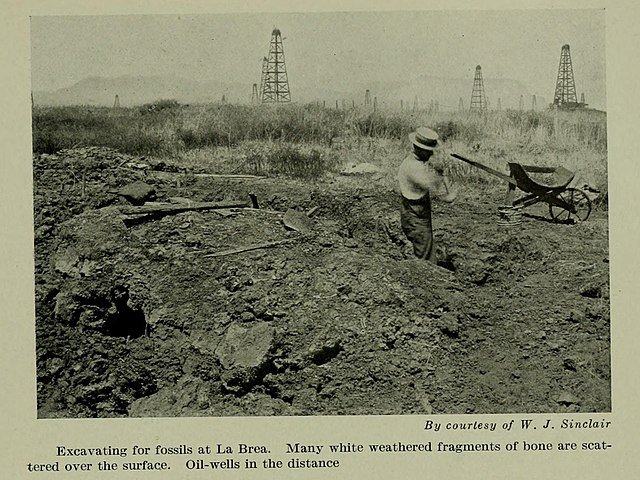
In the early 1900s, early paleontologists started digging big holes to look for fossils. University professors from around the world flocked to Rancho La Brea so they could get some Ice Age Fossils for their university.
George Hancock, the owner of the La Brea Tar Pits, gave the land to the County of Los Angeles so that they could properly take care of the fossils. The George Page Museum opened at the La Brea Tar Pits in 1977, bringing the fossils of La Brea home. Excavation work and fossil preservation continue at the La Brea Tar Pits. And one of the really cool things is that it is all open to the public so we can see all of the cool science goes on here.
Our Day at Hancock Park and the La Brea Tar Pits
Hancock Park is the park where the La Brea Tar Pits are located. It is a beautiful park that is full of grassy areas, trees, statues of ice age animals… and tar. Admission to Hancock Park is free.
Our day in Hancock Park started with a nice stroll through the park. Of course, my boys found trouble quickly. It didn’t take long for them to find an asphalt seep and stick their fingers in it. Luckily they didn’t stain their clothes too badly!
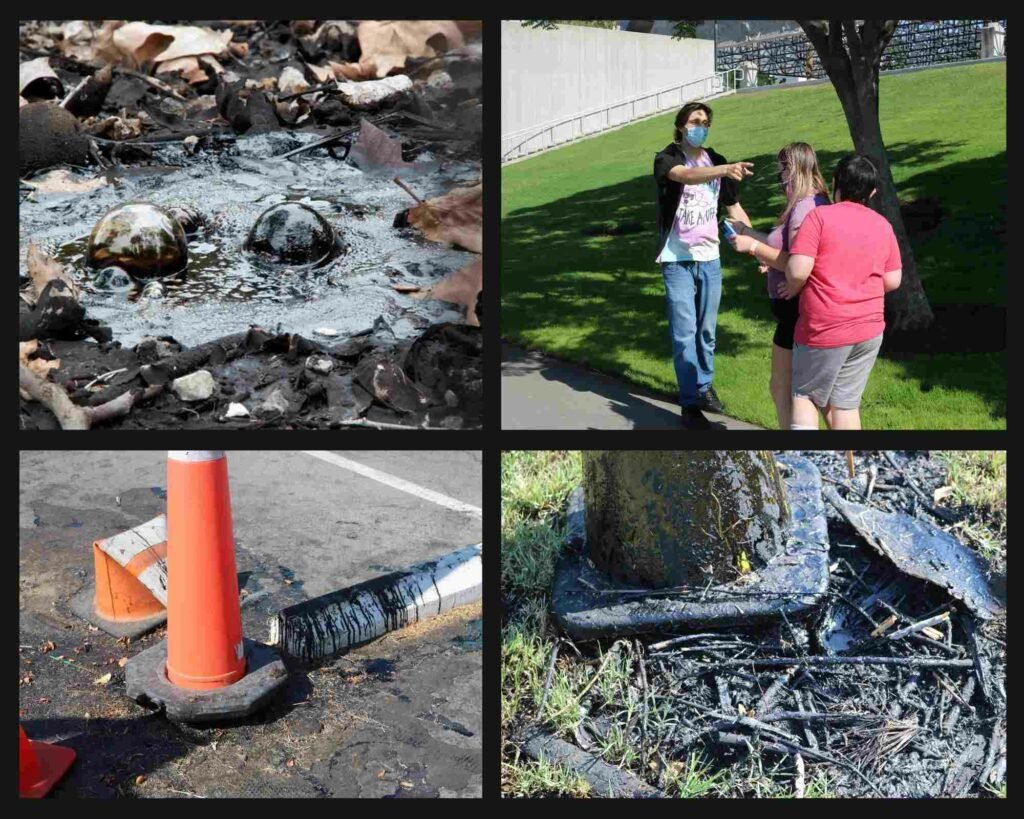
Pro Tip
Hancock Park still has tar seeping up through the ground. It’s everywhere. Watch your step, because even though they mark small asphalt seeps with cones, they can be easy to miss. You don’t want this stuff on your shoes.
Also, be careful not to get it on your clothes, because it won’t come out. (I tried and it didn’t work) One of my kids stained his clothes after he dipped his finger in some asphalt he found in the parking log, and started a game of trying to get the tar on everyone else.
Here are some of the cool things we saw while we walked through Hancock Park:
Lake Pit

The Lake Pit is one of the first things that people see when they visit Hancock Park. It’s right in front of the Page Museum, and next to Wilshire Blvd. You really can’t miss it, and you probably wouldn’t want to, anyway.
The pit was basically created when George Hancock dug a big hole to mine the asphalt for his asphalt mining operation in the 1870s. It is also the location of several pits that were excavated during the early 1900s. Eventually, it all filled up filled with rain water, and now it looks like a little lake with a trio of mammoths at one end.
Tar Pits

There are five fenced off tar pit areas that you can see when you walk through Hancock Park. Most of them only allow you to look at the tar pits through the fences, which my boys, especially Daniel (who is the youngest and has autism) found to be kind of boring. I thought it was fascinating to see the places where the early paleontologists dug up fossils over a hundred years ago. But, I’m a science and history geek, so I find all of this kind of thing really interesting.
Two of the tar pits, however, give you a pretty close-up view. This was the first place we got to see some actual fossils. It was pretty cool. The boys were much more interested in this.
The Observation Pit

The Observation Pit is the first museum of Hancock Park.
Visitors enter the building that was built over Pit 101,and basically feel like they are entering a working excavation pit.
The display inside shows what a group of fossils look like when paleontologists uncover them.
Pit 91
Pit 91 is the best pit to see at the La Brea Tar Pits. Early paleontologists started digging this pit in 1915, over 100 years ago. It is one of the world’s oldest and longest-running urban excavation sites. Summer is when they dig, so if you go to the tar pits during the summer, you will probably be able to see them excavating.
We got lucky. They were digging in Pit 91 on the day we were there. We stood in the Viewing Station, and watched as the scientists carefully dug and cataloged the fossils. The kids were amazed. I was too. (which is probably why I didn’t get any pictures)

Project 23
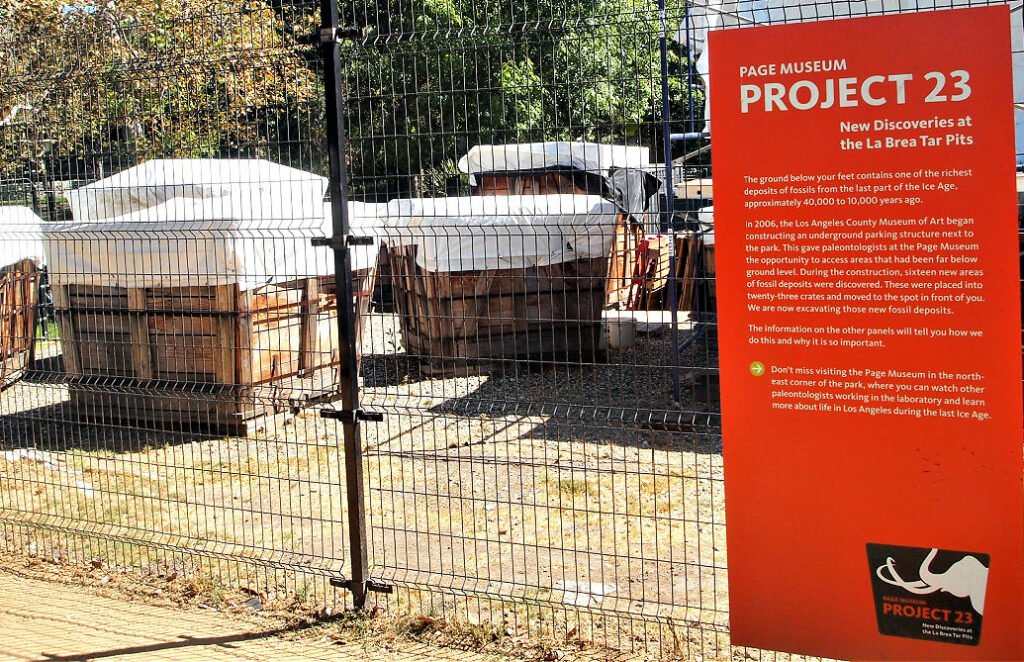
In 2006, the Los Angeles County Museum of Art (LACMA) started building a new underground parking structure. The workers found not just one, but SIXTEEN fossil deposits.
Instead of stopping construction while scientists sifted through the site, they pulled out the fossil-filled earth in large chunks that they put in 23 large wooden crates so they could safely move the fragile fossils.
When you visit the tar pits, be sure to stop by Project 23 and watch the scientists excavate the boxes’ contents. They’ve already found a complete mammoth skeleton that they named Zed. I wonder what else they’ll find.
The George Page Museum

If you are looking for fossils at the La Brea Tar Pits, then the George C. Page Museum is the place to be. They have one of the largest collections of Ice Age fossils in the world. It is very cool.
Fossils in the George C Page Museum

Photo by Kristin Parker, California Majesty
By the time we got to the Page Museum, the kids were definitely ready to see fossils. Once we got inside, they were amazed, to say the least.
There were fossil skeletons of all kinds of Ice Age animals. We saw lions, bison, saber tooth cats, mammoth, horses, and many others. Daniel was amazed at how big many of them were. Stephanie, who has been to the tar pits several times before, took her time and read all of the display signs to learn more. She does that pretty much everywhere we go.
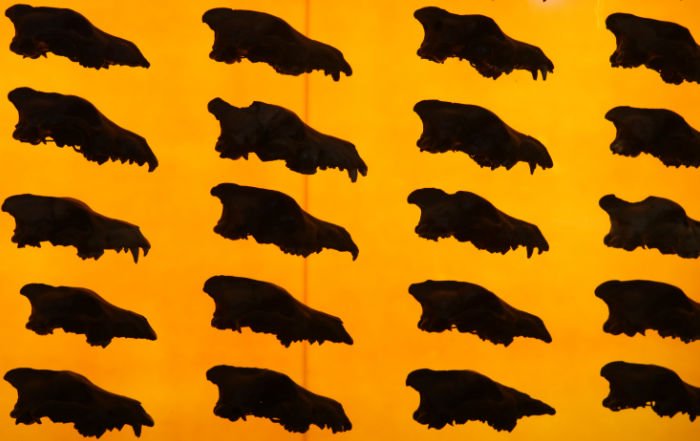
As for me, my favorite fossil display is the wall of dire wolf skulls. It gives visitors an idea of how many dire wolves got caught in the tar pits, especially seeing as they are the animal that scientists have found the most often.
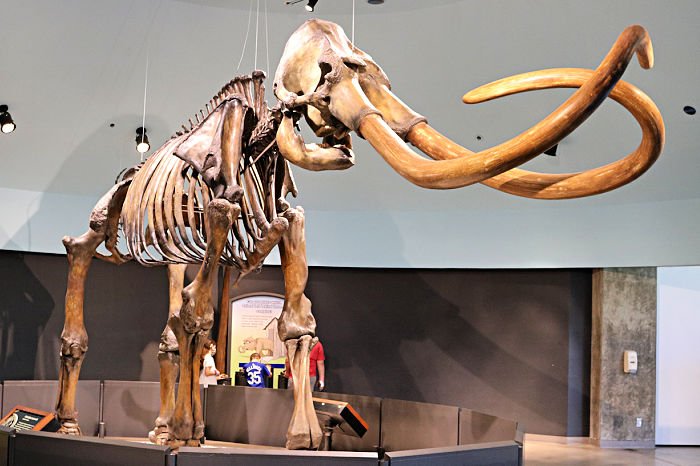
Although, I have to say. The big huge mammoth skeleton was pretty amazing.
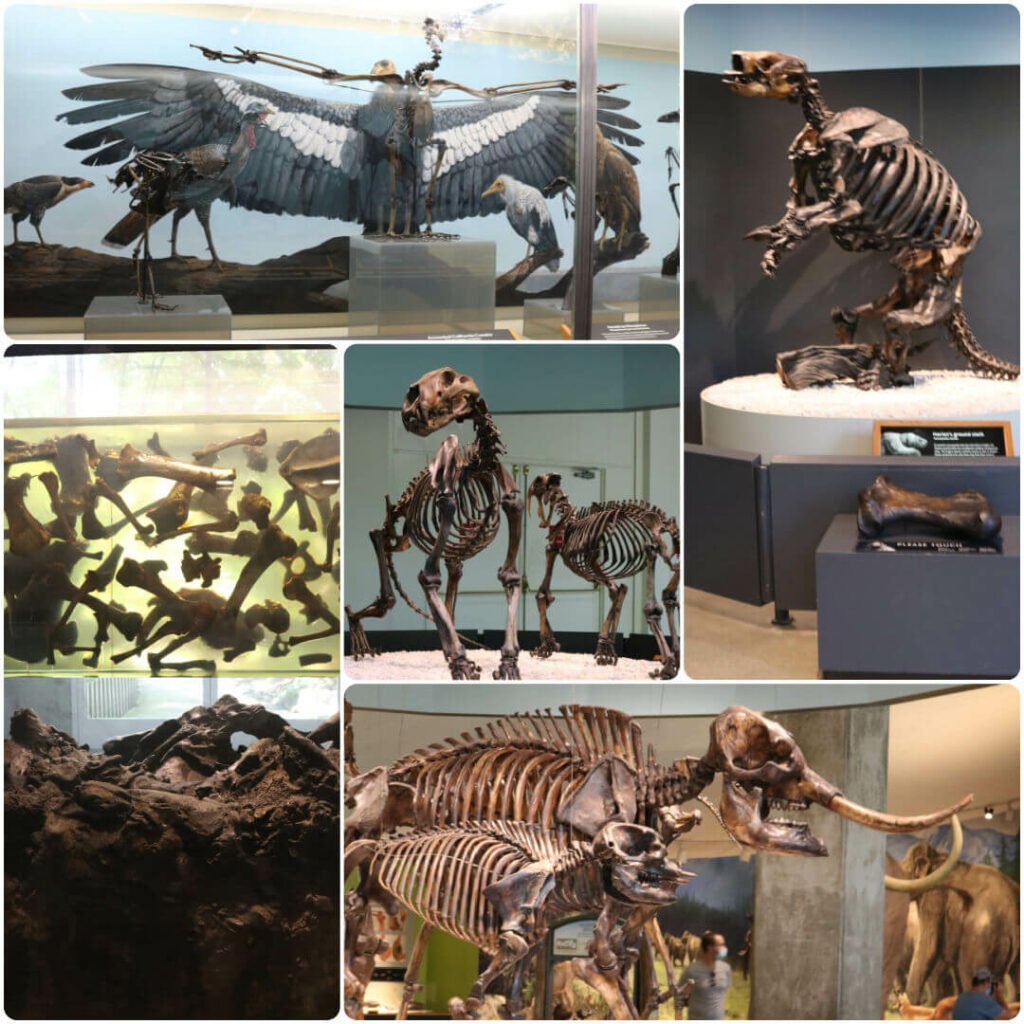
Three are lots and lots of fossils and skeletons to see in the George C. Page Museum at the La Brea Tar Pits. It’s amazing how many different types of animals have been found, and continue to be discovered here.
Interactive Displays
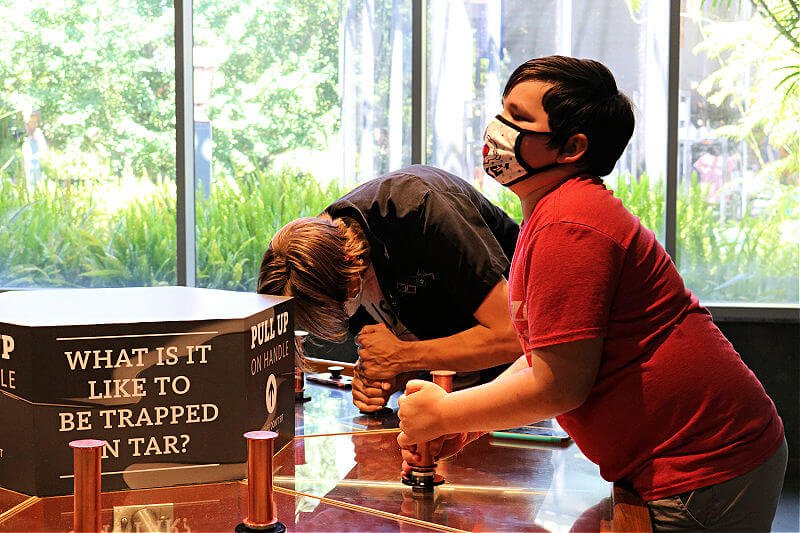
Photo by Kristin Parker, California Majesty
The Page Museum is a family museum. With this in mind, they have several interactive displays scattered throughout the museum that help kids (and their adults) learn about the tar pits and the Ice Age through doing. Daniel had two favorite displays, the one where he had to try to pull the animal “paw” out of a shallow pool of tar and the one that simulated a mammoth fight and showed how they used their tusks to defend themselves.
The interactive displays were definitely the highlight of the museum for Daniel. I think the big kids liked them too.
Fossil Lab
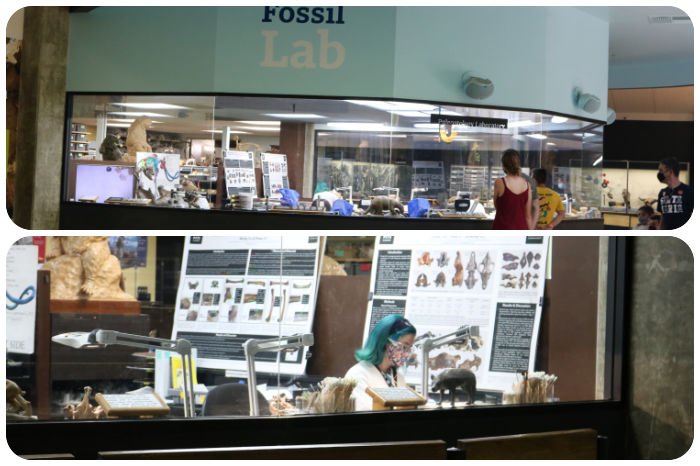
The Fossil Lab, also known as The Fishbowl, is where the science magic happens. All of the fossils that are excavated from the grounds of Hancock Park are brought here to be cleaned up, identified, and catalogued.
Much of the work of cleaning the fossils is done in the Fossil Lab, which has windows that let the museum’s visitors see what they do. I remember coming here as a kid and being completely fascinated with watching the paleontologists while they did their work. It still does.
3D Theater
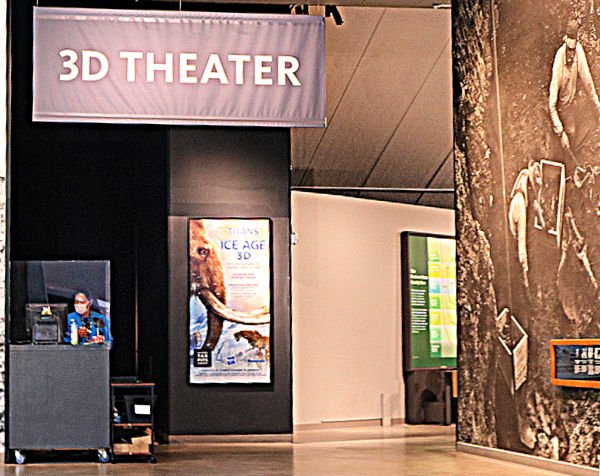
Last on my list of seeing fossils at the La Brea Tar Pits is a movie. Titans of the Ice Age is a 3D movie that teaches the audience about Ice Age mammals like mammoths, mastodons, giant sloths, saber tooth cats, and dire wolves.
The movie tells about how they lived, how they got stuck in the tar, and how paleontologists are learning about them by studying their fossilized remains. It does a good job of explaining a lot of what you will see in the Page Museum.
It’s an amazing movie. Even my son Daniel was amazed by it, and he doesn’t get excited about things at museums very often. It costs $6 per person to see the movie, and it well worth the cost.
Visiting La Brea Tar Pits– At a Glance
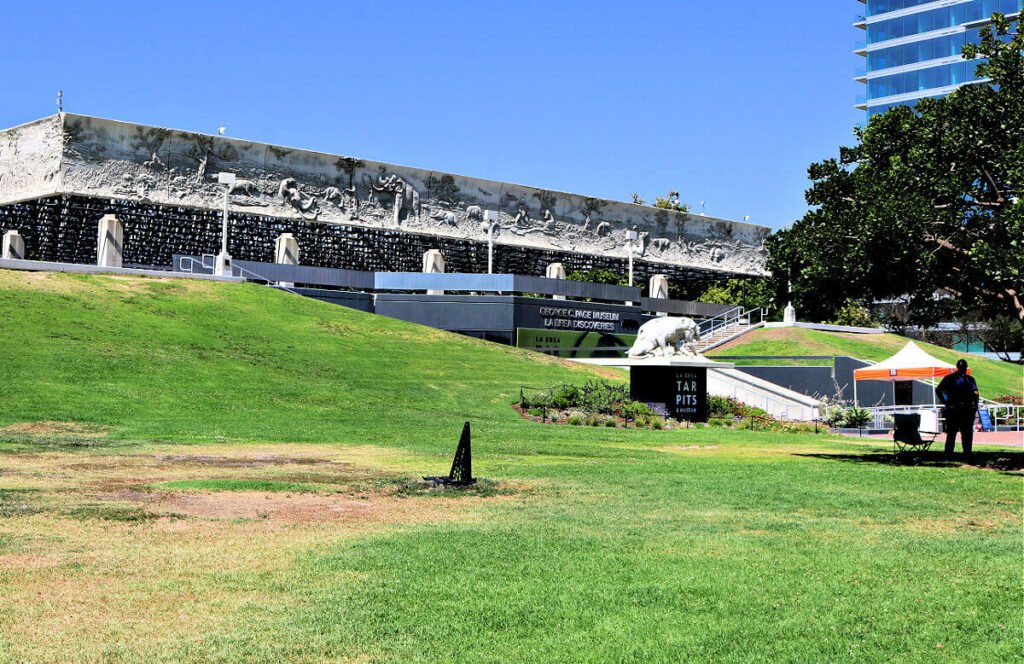
- Located in LA’s Miracle Mile Neighborhood
- Parking is $15 per day
- Hancock Park itself is free
- Museum Admission– $7, $12, or $15
- 3D Movie– $6 per ticket
- The museum is open every day of the week except Tuesday
- It takes most people 2-3 hours to see both the museum and the surrounding park.
Admission
Admission to Hancock Park is free, but the George C. Page Museum charges admission.
- Adults – $15
- Seniors and Students – $12
- Children – $7
- Children under 2 are free.
There are also ways to visit the museum for free. Los Angeles County residents can get in free between 3 and 5 pm every day the museum is open. Additionally, California EBT card holders, California teachers, and active and retired military members can get in free with ID.
Hours
Hancock Park is open 6:00 am to 10:00 pm every day.
As if March 2022, the George C. Page Museum and Pit 91 are open as follows. The Observation Pit is closed as of March 2022.
- Wednesday-Monday 9:30 am – 5:00 pm
- Closed on Tuesdays
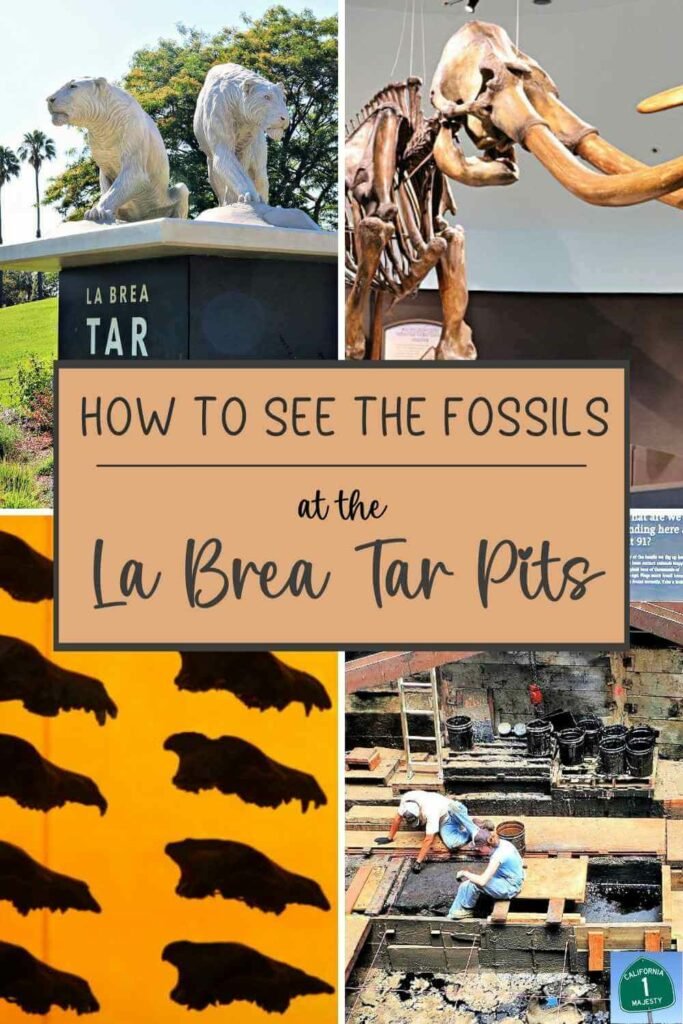
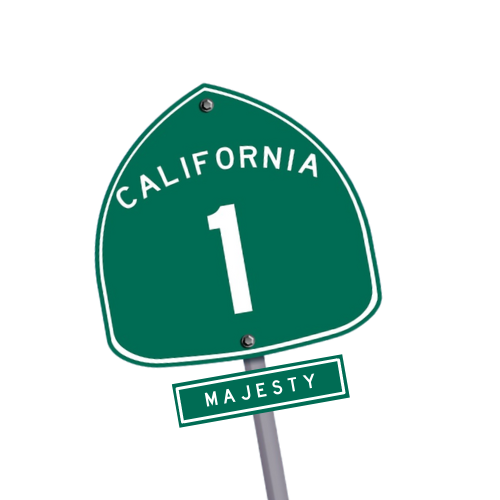
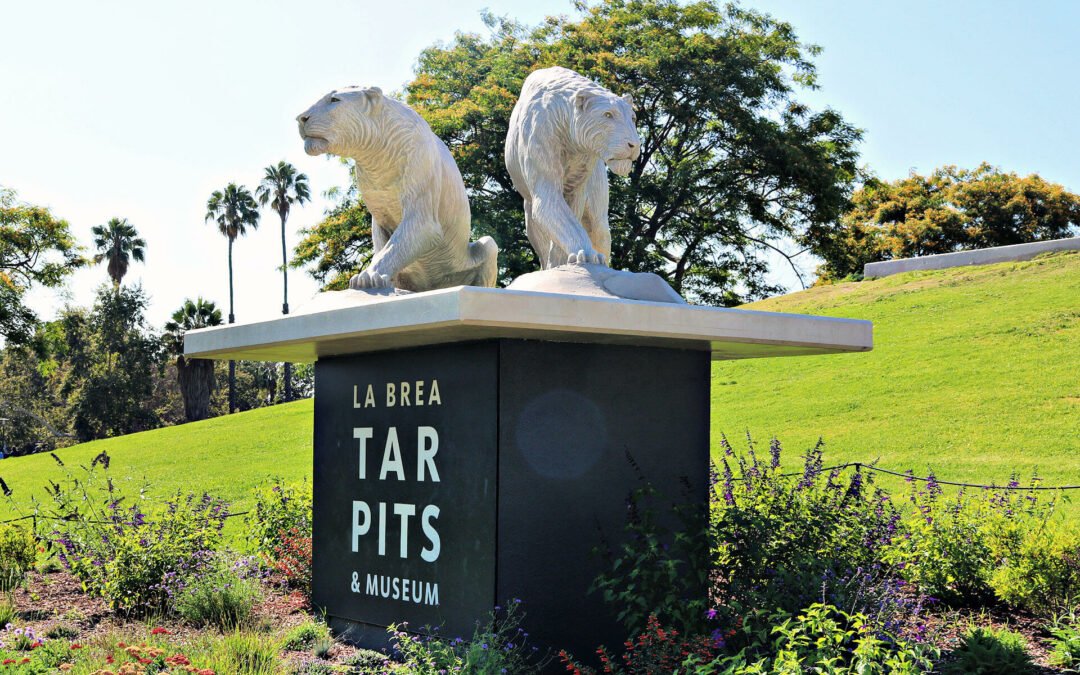
Recent Comments